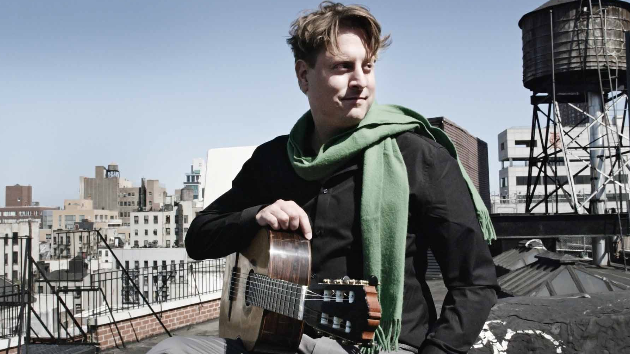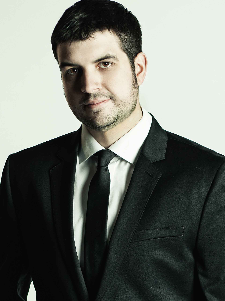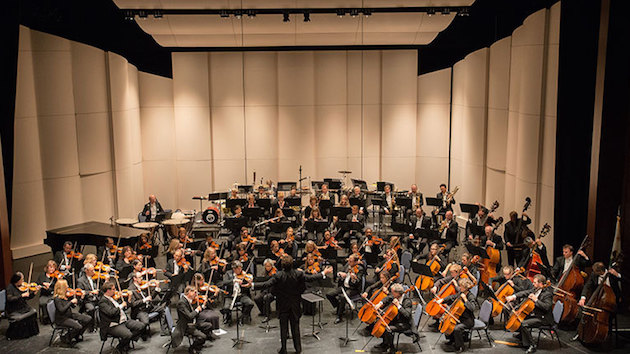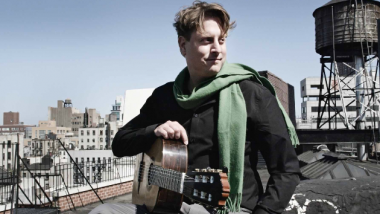
The California Symphony’s Young American Composer-in-Residence program gave birth to a guitar concerto at the Lesher Center for the Arts in Walnut Creek on Sunday, May 8. Composer Dan Visconti, a resident of Chicago who’s 34 this year, has titled his new piece Living Language in recognition of his firm belief that classical music still is one, despite various gloomy prognostications.
Conductor Donato Cabrera decided that Philip Glass’s Company, a stealthy little piece for string orchestra, would make an ideal appetizer for the concerto. It did: both works are hushed and serious. Entirely eschewing the sardonic whimsy I’ve heard in other pieces of his, Visconti has dealt with the problem of a guitar being quieter than an orchestra by keeping the orchestra quieter than the guitar. Only briefly, in the last of three connected movements, did the orchestra ever play more than a couple notes in forte — over the guitar or without it.

Jason Vieaux began the work casually, giving a few unaccompanied notes with long pauses between them. His excellent performance throughout was most remarkable here. Each firmly resonant note passed through three or four pitches and as many tone colors before fading away. Soon the guitar was joined by the quiet sheen of a single held note in the second violins. Gradually, Vieaux picked up a little speed, plus some harmonies from Indian classical music. Eventually some soft percussion came in, then the rest of the strings.
As the concerto proceeded, it became busier and somewhat more energetic. Harp and flute got a little to say. Hints of livelier music appeared occasionally: flamenco strums and snaps on the guitar, then a bit of klezmer in the orchestra, followed by a passage that sounded like an homage to Mason Williams’ Classical Gas.
At least some of these hints were deliberate: Visconti was aiming for a tour of world music. Yet the concerto remained gentle, hushed, and transparent throughout, even while many were playing. Visconti’s skill at orchestration keeping it so was admirable. This concerto sounded quite unlike other modern guitar concertos by Rodrigo or others, yet it was, like their work, consonant, pleasurable, and satisfying.
The program concluded with a straightforward and earnest account of Brahms’s Second Symphony. A few characteristics notable in the performance of Company reappeared here: Cabrera’s fondness for slow tempos, and a tendency toward thin sound quality in the first violins, in contrast to the cellos and basses, whose sound jumped out out at the audience.
These features helped turn Brahms’ warmest and most pastoral symphony into a more austere stereotype of his music, deeply autumnal and melancholy. The teenagers in the audience — I was seated near a few — were conspicuously restless, and probably went home vowing never to listen to any more Brahms.
For older members of the audience, better attuned to these emotions, it was a captivating rendition. Cabrera rose through solemnity to grandeur, particularly in the climax of the Adagio. I felt transported back to the conducting of Otto Klemperer, half a century or more ago.
The intermission, between Visconti and Brahms, came with something I’d never seen at an indoor symphony concert before: ushers at the foot of the aisles selling tiny containers of ice cream with a built-in spoon. Apparently Lesher has been offering this as a fund-raiser during intermissions at plays, and has now extended it to the California Symphony. The ice cream was refreshing; what I missed was any place to discard the empty container.


